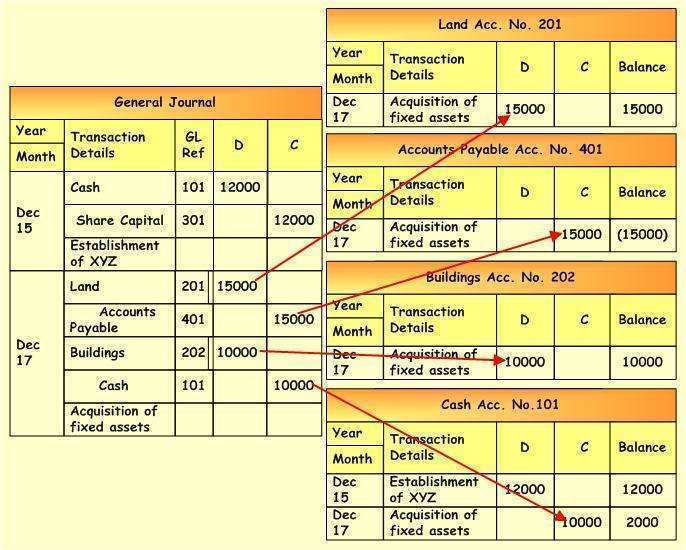Content
The company will charge the same monthly depreciation expense over the asset’s life. It assumes that the assets will be used equally over their lifetime. Some systems specify lives based on classes of property defined by the tax authority.
How do you calculate 10 depreciation?
Thus, The formula as per the straight-line method: 1/useful life of asset = 10% Depreciation period Double Decline Method: Rate as per straight-line method * 2 = 10% * 2 = 20%
Use our research library below to get actionable, first-hand advice. Get clear, concise answers to common business and software questions. Best Of We’ve tested, evaluated and curated the best software solutions for your specific business needs. Accounting Accounting software helps manage payable and receivable accounts, general ledgers, payroll and other accounting activities. Business Checking Accounts BlueVine Business Checking The BlueVine Business Checking account is an innovative small business bank account that could be a great choice for today’s small businesses.
This will help you make smarter financial decisions leading to reduced expenditures. Someone purchasing a new vehicle might compare the annual depreciation expense of different vehicles when deciding which vehicle to purchase. When you purchase a fixed asset for your business, like a vehicle, computer or furniture, you generally cannot write the entire cost off in the first year.
Step 1: Calculate The Cost Of The Asset
The straight-line depreciation method considers assets used and provides the benefit equally to an entity over its useful life so that the depreciation charge is equally annually. The declining balance method calculates more depreciation expense initially, and uses a percentage of the asset’s current book value, as opposed to its initial cost. So, the amount of depreciation declines over time, and continues until the salvage value is reached. Recording depreciation affects both your income statement and your balance sheet. To record the purchase of the copier and the monthly depreciation expense, you’ll need to make the following journal entries. There are three other widely-accepted depreciation methods or formulas. An accelerated depreciation method that is commonly used is Double-declining balance.

Cost of the asset is $2,000 whereas its residual value is expected to be $500. Is appropriate where economic benefits from an asset are expected to be realized evenly over its useful life.
Accounting Articles
This method is an accelerated depreciation method because more expenses are posted in an asset’s early years, with fewer expenses being posted in later years. This approach works by calculating depreciation as a percentage and then depreciating the asset at twice the percentage rate. QuickBooks is our recommended accounting software for small businesses. However, you can purchase fixed asset software that is designed to help you track and calculate depreciation for all of your fixed assets. The carrying value would be $200 on the balance sheet at the end of three years.
Use this calculator to calculate the simple straight line depreciation of assets. Now, let’s consider a full example of a finance lease to illustrate straight-line depreciation expense.
How To Calculate Straight Line Depreciation Formula
Are reduced by $ and moved to the Property, plant and equipment line of the balance sheet. Reed, Inc. also evaluates the incremental borrowing rate for the lease to be 4%. For this example we will assume no other lease incentives, accruals, or initial direct costs are applicable for this lease. It is calculated by simply dividing the cost of an asset, less its salvage value, by the useful life of the asset. Because this method is easy and simple, therefore it suits firms that are small in size. The depreciation charge on the vehicle will be $2900 every year for 10 years.
Instead, you have to spread the deduction out across the timespan you’ll be using it. The straight line depreciation calculation should make it clear how much leeway management has in managing reported earnings in any given period. It might seem that management has a lot of discretion in determining how high or low reported earnings are in any given period, and that’s correct. Depreciation policies play into that, especially for asset-intensive businesses. There are good reasons for using both of these methods, and the right one depends on the asset type in question.
Straight Line Basis Definition – Investopedia
Straight Line Basis Definition.
Posted: Sat, 25 Mar 2017 16:20:40 GMT [source]
Calculating straight line depreciation is a five-step process, with a sixth step added if you’re expensing depreciation monthly. Looking for the best tips, tricks, and guides to help you accelerate your business?
What Can Be Depreciated?
Accumulated depreciation will present as the fixed assets contra account in the balance sheet. Depreciation is thus the decrease in the value of assets and the method used to reallocate, or “write down” the cost of a tangible asset over its useful life span. Businesses depreciate long-term assets for both accounting and tax purposes. Generally, the cost is allocated as depreciation expense among the periods in which the asset is expected to be used. If you use the cash basis accounting method, then you do not have to depreciate fixed assets for accounting purposes . The double-declining balance method is a form of accelerated depreciation.
Depending on your particular business and the assets you are depreciating, you want to choose the method that most accurately reflects the rate of use and deterioration of your assets. Asset depreciation is designed to help companies spread out the purchase price of a more expensive piece of equipment throughout the years of its life cycle. Take, for example, any new or existing equipment that you have in your plant. Your CMMS can track an asset’s value and anticipate depreciation over its useful life. If you’re using the straight line depreciation method, you can set expectations on how the total devaluation of an asset will be distributed over time and recorded in the depreciation schedule.
How Do I Calculate Straight Line Depreciation?
Straight line basis is a method of calculating depreciation and amortization, the process of expensing an asset over a longer period of time than when it was purchased. To calculate the straight-line depreciation expense, the lessee takes the gross asset value calculated above of $843,533 divided by 10 years to calculate an annual depreciation expense of $84,353.

If this was the company’s only asset, the Balance Sheet would show a zero balance for Fixed Assets. This post is to be used for informational purposes only and does not constitute legal, business, or tax advice. Each person should consult his or her own attorney, business advisor, or tax advisor with respect to matters referenced in this post. Bench assumes no liability for actions taken in reliance upon the information contained herein. The straight line calculation, as the name suggests, is a straight line drop in asset value. A depreciation schedule that treats all property acquired during the year as being acquired exactly in the middle of the year.
Step 6: Divide Annual Depreciation By 12 To Calculate Monthly Depreciation
For example, the residual value of the computer, based on estimate would be 200$ at the year’s fours. In a nutshell, the depreciation method used depends on the nature of the assets in question, as well as the company’s preference. Applicant Tracking Choosing the best applicant tracking system is crucial to having a smooth recruitment process that saves you time and money. Find out what you need to look for in an applicant tracking system.
- Accounting Accounting software helps manage payable and receivable accounts, general ledgers, payroll and other accounting activities.
- If the vehicle were to be sold and the sales price exceeded the depreciated value then the excess would be considered a gain and subject to depreciation recapture.
- One glaring exception to this is Section 179, which lets you deduct the full cost of some assets in a single year (up to $500,000 total).
- Calculate the depreciation expenses by using the straight-line method is really, really simple and quite straight forwards.
- At the end of year 2 we might expect to be able to sell the asset for $6,000.
The straight-line depreciation method is the easiest to use, so it makes for simplified accounting calculations. Before you can calculate depreciation of any kind, you must first determine the useful life of the asset you wish to depreciate.
Calculating Total Asset Turnover For Your Business
Here’s what they have to say.Customers See how our amazing customers have found success with UpKeep.UpKeep Edge Real time IIoT sensors for real time remote condition monitoring of your assets. In this example, the depreciation rate can also be specified in terms of a percentage. However, in the real world, companies purchase assets at different times during the year, and a full year’s depreciation need not be taken on a partial year’s usage. Straight straight line depreciation example line method is also convenient to use where no reliable estimate can be made regarding the pattern of economic benefits expected to be derived over an asset’s useful life. Ken Boyd is a co-founder of AccountingEd.com and owns St. Louis Test Preparation (AccountingAccidentally.com). He provides blogs, videos, and speaking services on accounting and finance. Ken is the author of four Dummies books, including “Cost Accounting for Dummies.”
Depreciation is a way to account for the reduction of an asset’s value as a result of using the asset over time. Depreciation generally applies to an entity’s owned fixed assets or to its right-of-use assets arising from finance leases for lessees.
If an asset is put into service in the middle of the accounting year, most tax systems require that the depreciation be prorated. The most common method of proration is called the half-year convention. Assuming a fiscal year ending December 31, under the half-year convention the asset is considered to have been put into service on July 1st of the year.
The straight line depreciation formula will give you the same tax deduction for an asset, year after year. This works differently than other depreciation methods that provide differing tax deductions each year. For investments, the cost basis of the asset is usually the total amount you originally invested in the asset plus any commissions, fees or other expenditures involved in the purchase. For tax purposes, it’s important to note if you reinvested any dividends and capital gains distributions rather than taking those distributions in cash. This method is regarded as the most accurate representation of devaluation, as it more closely reflects the actual wear and tear that assets go through. When using the units of production method, more resources are needed to collect enough data over long periods of time. Because of additional efforts required for this method, it is typically used for higher-value equipment.
Depreciation expense will increase the total expenses on your profit and loss statement. Your balance sheet will include the accumulated depreciation account. The accumulated depreciation account will reduce the overall value of your fixed assets. AccountDebitCreditDepreciation Expense000Accumulated Depreciation000Depreciation expense will impact the income statement and deduct company profit.
Author: Edward Mendlowitz
